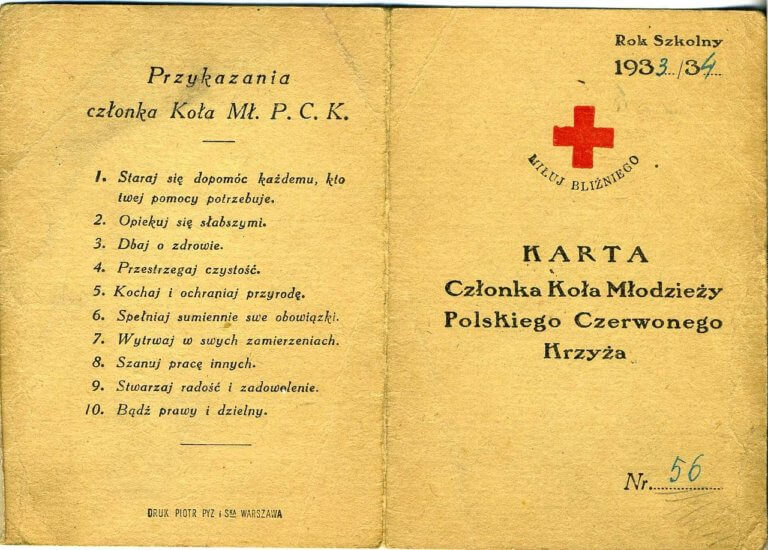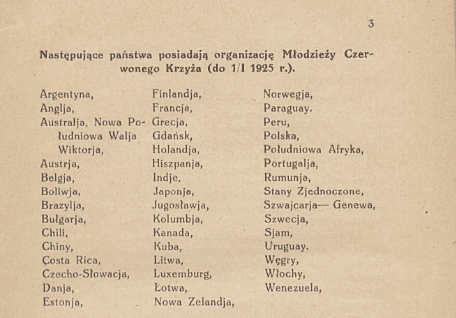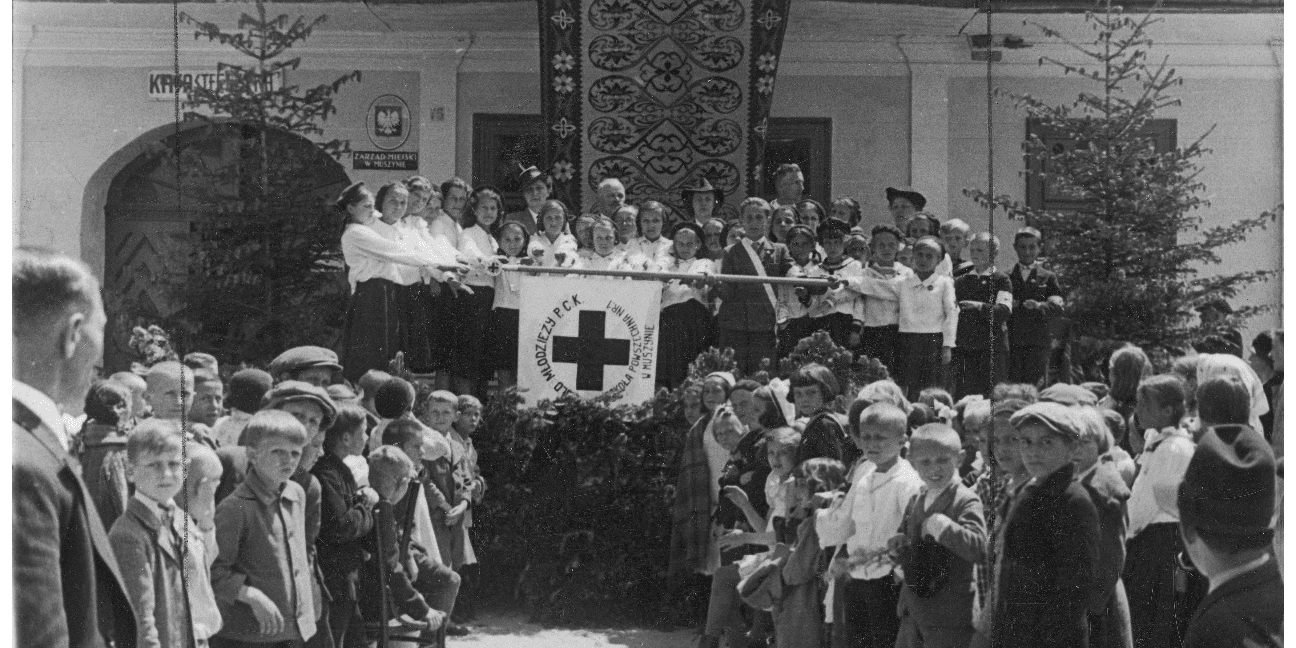Youth of the Polish Red Cross
Groups support disaster victims by providing shelter, material assistance, and psychosocial support. Be part of the team that helps in the most difficult moments!
Youth activities
The youth of the Polish Red Cross (PCK) consists of volunteers and members of the Polish Red Cross under 30 years old, who dedicate their free time to carry out projects and programs conducted by the Polish Red Cross, help in their immediate surroundings, and promote humanitarian ideas within the child and youth environment.
The activities of the Youth vary across different regions of Poland, as assistance is provided based on the needs of a given community.
The activities of the PCK Youth are based on four organizational structures.
Social media MPCK:
Facebook of PCK Youth
Instagram of PCK Youth
Clubs support the youngest in learning tolerance, helping those in need, and taking care of health. Join the initiative and help children develop social skills from preschool!
Initiative for students and teachers, supporting school communities in the spirit of humanitarianism and assistance. Join the nationwide campaigns of the Polish Red Cross and bring the idea of helping to your school!
Space for students and university staff who want to support those in need and realize the values of the Polish Red Cross. Join us, organize projects, and co-create nationwide initiatives!
SIM PCK groups are a space for young leaders who want to engage socially and develop their skills. Join us and create educational projects and initiatives that change local communities!
If you would like to join a selected group or create one in your school, university, or in the district or regional branch of the Polish Red Cross (PCK), please familiarize yourself with the information on the subpages of the individual groups.
History of the Youth of the Polish Red Cross
In the spirit of love for one’s neighbor and homeland, or how the youth movement of the Polish Red Cross was established.
In the newly established Polish Red Cross, after Poland regained independence, the first Youth Circles were formed, inspired by other countries. The Polish Red Cross is the first humanitarian organization that, after years of partition, activated youth in schools to engage in social activities throughout the country. The idea of uniting youth under the banner of the Red Cross was met with great approval from both young Poles, who were looking for their place after demobilization, and from students and teachers who saw in the Polish Red Cross Society a helper in educational and developmental work.

1921
The first School Circles of the Polish Red Cross (PCK) were established in Radom and Warsaw two years after regaining independence, in 1921, and it was they who initiated the widespread youth movement called the Youth of the Polish Red Cross. A year later, 399 such units were spontaneously created across the country! The PCK Circles were established at the initiative of the then-president of the PCK - General Józef Haller.
“... we wish to awaken in the hearts of our children and youth the spirit of love for one's neighbor and a sense of duty towards all people, to do good wherever the strength allows, not only for other purposes but for the sake of the good deed itself, to seek reward for good deeds in one's own conviction of fulfilling duty. We want to oppose selfishness with the love of the community, the good of which is simultaneously the good of each individual. However we formulate this goal, the paths to it lead through the association of children and youth under the banner of the Red Cross and through their active participation in activities…” - this is how the objective of youth action was defined by the Main Committee of the Youth Circles of the Polish Red Cross.
The Youth Circles carried out countless hygiene actions, cleanliness contests, and in the spirit of the Red Cross, the youth also trained in first aid and rescue. However, the foundation was the Samaritan activity. The Youth Circles gathered funds by organizing various campaigns, sewing shirts for poor children on their own, organizing holiday packages for those in need, visiting the sick in hospitals and homes, organizing clothing and book drives, providing nourishment in schools, and caring for abandoned graves.
The Youth Circles of the Polish Red Cross were established in all types of schools: secondary schools, gymnasiums, vocational and trade schools, teacher seminaries, and elementary schools, and over time, academic circles were also created.
The first Youth Circles in Poland were modeled after existing units in other national Red Cross associations around the world. The youth movement arose spontaneously during World War I out of the need to help soldiers and their families. It began almost simultaneously in the United States, Canada, and Australia. After the end of the Great War, the topic was mainly continued by Americans. Ideological workers of the Red Cross organized eager and active youth under the Red Cross banner - at that time, the Junior Red Cross was created with the slogan "I serve". Following the example of America, in 1925, the youth movement had already developed in 50 countries of the Red Cross League established in 1919. The youth of countries affiliated with the League maintained correspondence contacts, exchanging experiences and ideas, learning from each other. In all these countries, the youth movement had its formal regulations, and special magazines for youth were published.

1936
After 15 years of activity, in 1936, there were already 4,500 clubs in Poland gathering 220,000 members. It was unimaginable to have a school without the Youth Circle of the Polish Red Cross. Thanks to charismatic educators and instructors, the youth could feel their own worth and the purpose of charity and selfless help. And this is still true today. It is the guardians of the School Circles of the Polish Red Cross who ensure that the ideas from 1921 remain alive.
Under the slogan "Love thy neighbor!" the Youth Circles conducted rich activities in the 1920s and 1930s.
- Activities to help those in need (help for orphans, widows, the disabled, the elderly, poor families; collecting bread for shelters; organizing Christmas trees and Easter blessings for the poor; tutoring; care for the graves of fallen soldiers; animal care; running libraries and reading rooms; organizing colonies; nurturing young trees along roads; organizing Mother's Day).
- Hygiene and health (first aid kits, washbasins, hairdressers, health talks, health and cleanliness competitions, care for healthy teeth, distributing cod liver oil, first aid courses, collecting herbs, fighting dirt, combating tuberculosis, creating posters and leaflets with hygiene rules, organizing children's rooms in hospitals, working on "patches," or in gardens).
- Handicrafts (sewing dresses and shirts for impoverished children, making buttons, yarn work, creating Christmas ornaments, weaving, shoemaking, making straw hats, baskets).
- International school correspondence conducted under the patronage of the League of Red Cross Societies (writing letters, making and sending national-themed toys, creating albums with folk costumes, examples of crafts, embroidery and lace patterns, collecting and recording applications, historical legends). One-third of all clubs conducted foreign correspondence).

Other For volunteers
Become a volunteer
Anyone, regardless of nationality, ethnic group, social origin, gender, religion, language, and political views, can engage in the activities of the Polish Red Cross.
Volunteering in the Polish Red Cross - structure
Volunteers and Members can engage primarily in the activities of individual groups, circles, and clubs of the Polish Red Cross (we call them basic units of the Polish Red Cross). Depending on whether they are a volunteer or a member, they have different rights and obligations.
You are currently viewing a page filtered by content from the department. Cała PolskaIf you want to view content from Cała Polskaclick the button